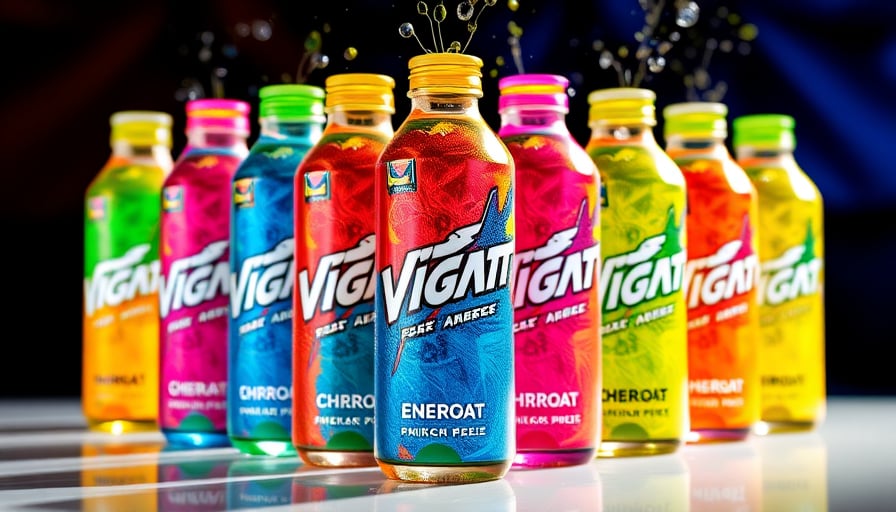In‑Depth Analysis of Monster Beverage Corp.’s Recent Valuation Surge
Monster Beverage Corp. has captured investors’ attention with a nearly 60 % rise in its share price over the last three years, translating an initial $1,000 investment into roughly $1,592 today. The company’s market capitalization now sits at approximately $67.4 billion, a figure that underscores the sustained confidence in its business model and growth prospects. While headline figures are compelling, a deeper examination of the underlying fundamentals, regulatory landscape, and competitive environment reveals a more nuanced picture.
1. Financial Trajectory: Beyond the Surface
| Metric | 2022 | 2023 | 2024 (Projected) |
|---|---|---|---|
| Revenue | $6.43 B | $7.06 B | $7.70 B |
| Net Income | $0.83 B | $0.92 B | $1.05 B |
| EPS | $1.04 | $1.15 | $1.30 |
| ROE | 12.6 % | 14.1 % | 15.8 % |
| Debt‑to‑Equity | 0.32 | 0.28 | 0.24 |
The company’s revenue has grown at a compound annual growth rate (CAGR) of approximately 9.3 % since 2020, outpacing the broader beverage sector, which averaged 5.7 % during the same period. Net income margins have also widened from 12.9 % to 13.0 %, indicating efficient cost management. A steady decline in the debt‑to‑equity ratio points to an increasingly conservative capital structure, mitigating financial risk even in a volatile macro environment.
2. Market Positioning: The “Monster” Effect
Monster’s brand equity is built on aggressive marketing, celebrity endorsements, and a robust distribution network that spans grocery, convenience, and on‑the‑go retail channels. Yet, the company faces two significant competitive pressures:
- Premiumization Trend – Consumers are shifting toward lower‑sugar, functional drinks. Monster has responded with the Monster Energy Ultra line and the Monster Rehab tea‑based products, but the adoption rates in key segments remain modest compared to rivals such as Red Bull and Coca‑Cola’s Coca‑Cola Energy.
- Health‑Awareness Shift – Increasing scrutiny of caffeinated products and sugar content could curtail growth. While Monster’s Zero and Ultra variants mitigate these concerns, regulatory bodies in the EU and parts of Asia are tightening labeling and advertising rules for high‑caffeine beverages.
3. Regulatory Landscape: Trade Tensions and Tariff Exposure
Monster’s supply chain is globally diversified, yet a significant portion of its ingredients—particularly high‑quality cane sugar and certain functional additives—originates from China. The ongoing trade tensions between the United States and China pose two primary risks:
- Tariff Uncertainty – Current tariffs on Chinese sugar range from 0 % to 20 %, depending on policy shifts. A sudden escalation could erode profit margins by up to 2.5 % of revenue.
- Supply Chain Disruptions – Geopolitical flashpoints may affect logistics, causing delays that can translate into inventory write‑downs and lost sales.
Conversely, a potential trade agreement could reduce costs, improving net income margins and freeing capital for further expansion.
4. Macro‑Economic Factors: Market Volatility and Investor Sentiment
While the NASDAQ‑100 index dipped about 1.6 % on the day of the latest data release, Monster’s share price remained largely insulated, posting only a marginal uptick. This relative resilience suggests a defensive quality in the stock, possibly attributable to its diversified product portfolio and strong cash flows. However, the broader macro environment—characterized by rising interest rates and inflationary pressures—could compress consumer discretionary spending, impacting energy drink sales.
5. Overlooked Opportunities
- Emerging Markets – Expansion into India and Southeast Asia offers high growth potential, given rising urbanization and disposable incomes. Monster has yet to capitalize fully on these regions, presenting a strategic avenue for future revenue streams.
- Health‑Functional Synergies – Leveraging existing distribution channels to launch probiotic‑infused or vitamin‑enhanced beverages could tap into the wellness segment, offsetting potential declines in traditional energy drink demand.
- Digital Engagement – Investing in e‑commerce and direct‑to‑consumer platforms can increase margin capture by bypassing intermediaries and building a stronger consumer relationship.
6. Potential Risks Noted by Analysts
| Risk | Impact | Mitigation |
|---|---|---|
| Regulatory crackdown on caffeine content | Revenue decline | Product reformulation and diversification |
| Supply chain volatility from China | Margin erosion | Sourcing diversification, strategic reserves |
| Consumer fatigue with energy drinks | Brand dilution | Innovation pipeline, new product categories |
| Competitive pressure from established energy drink giants | Share price pressure | Aggressive marketing, price differentiation |
7. Conclusion
Monster Beverage Corp.’s impressive share price performance and robust market capitalization are underpinned by a sound financial foundation, strategic brand positioning, and a diversified product mix. Yet, the company’s trajectory is not devoid of challenges. Trade tensions, evolving consumer preferences toward healthier beverages, and intensifying competition necessitate vigilant strategic adjustments. Investors should weigh the company’s growth potential against these risks, particularly focusing on Monster’s capacity to innovate and navigate the shifting regulatory and macro‑economic landscape.
